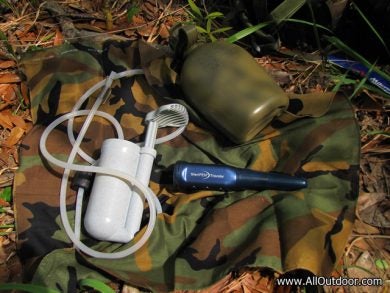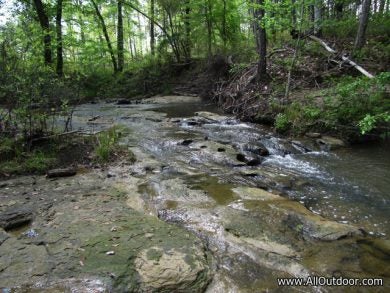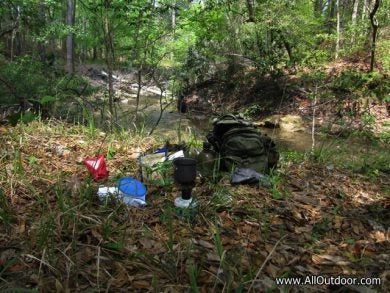Take Time to Rehydrate While Hiking
Kevin Felts 03.29.17

American Survival Guide (ASG) ran an article in the late 1990s that talked about taking time to rehydrate while hiking. The article had some pictures of a dry region that almost looked like a desert. The hikers were taking a break and the author was talking about drinking as much water as you could.
Have you ever read something that sticks with you? The article may not have been anything special or outstanding, but for some reason it stuck in your mind? That article from ASG has stuck in my head for the past 20 years.
I would like to explain the steps I take to rehydrate on the trail, and why I do certain things.
When I go on a hiking trip and stop next to a stream, I like to stay there until I drink enough water to urinate. After I urinate at least once, maybe twice, the canteens are filled and back on the trail I go. This flushes the kidneys and gives the body time to rehydrate.
Kidney Stones
If you look at the WebMD page on kidney stones, dehydration is the first thing listed.

The Urology Care Foundation page on kidney stones, one of the first things listed is low urine volume, which may come from dehydration.
Freeze dried meals are usually my go-to food items while hiking. Some of them have a high sodium content, and sodium is also a culprit in developing kidney stones.
Urinating at least once, maybe twice, will hopefully help flush the kidneys and reduce the risk of developing a kidney stone.
Having a kidney stone may sound trivial, but they are VERY painful. I have passed four kidney stones; the pain is beyond description.
While I am hiking and enjoying nature, I like to take the time to sit by a creek, enjoy the peace and quiet, and drink as much water as I can. Give the body time to rehydrate before heading back on the trail.
Distance Between Water Sources
One of the hikes I make, I know a certain creek will be the last reliable water source for several miles. I do not leave that creek thirsty. When I leave the creek, I know my body is full, kidneys have been flushed, and my canteens are full.

If by some chance I drink both canteens, I know my body is nowhere near dehydration. I tanked up at the last creek, and things are going good. Being fully hydrated and running and out water is not near as bad as being dehydrated and out of water.
Before heading out on a hiking trip, take time to plan the route. Consider which water sources may be dry, and have a backup plan.
While on a hiking trip in 2016, one of the creeks I had hoped to get water from was dry. The temperature was around 98 or 99 degrees and the heat index was close to 110.
With half a canteen of water left, I knew the next creek was half a mile or so away. My mind was put to rest knowing I had tanked up at the last creek and everything was going to be okay.
Always have a backup plan if a water source will be dry. Either have enough water to make it to the next stream, or have a nearby stream that will hopefully have water.
Eating on the Trail
Depending on the situation, I rarely eat a meal without a water source. Your body needs water to digest food. So, eating a meal while almost out of water and several miles from the next water source is foolhardy.

While on a recent hiking trip, I had the Mountain House freeze dried turkey tetrazzini. The instructions say to heat 16 ounces of water. That 16 ounces was just about all of the water in my canteens. Good thing I was next to a creek.
The turkey tetrazzini was a two serving pouch, which takes a little longer than the single serving to cool down enough to eat. While waiting on the meal to cool down, I took the time to refill the canteens and rehydrate.
Between waiting in the meal to cool and eating, I finished off both of my one quart canteens.
All along the creek were wild honeysuckle. Not only was it a beautiful place to take a break and have lunch, the fragrance from the honeysuckle was wonderful. There is no way to describe to beauty of nature in mere words.
Before heading back on the trail both canteens were refilled. This would be my last water source for a couple of miles.
Rehydrate
Besides the topics listed above there are all kinds of bad things that come along with dehydration.
- Blood thickens and is difficult for the heart to pump.
- Confusion.
- Headaches.
- Muscle cramps.
It only takes a few minutes to filter water and take a break. Sit by the stream for a little while, drink some cool filtered water, enjoy nature, and rehydrate.